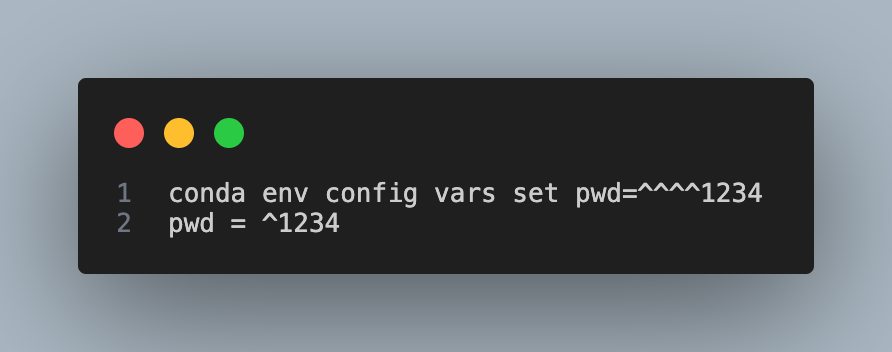Escaping the Caret (^) Character in Conda Environment Variables
 Marcia Cripps
Marcia Cripps
Escaping the Caret (^) Character in Conda Environment Variables
The other day I found myself trying to set a conda environmental variable with a caret (^) in it and found myself frustrated. I tried what I thought would work using “ “ and ‘ ‘ and % to escape with no success.
I was trying to set pwd = ^1234.
I first tried:
When setting environment variables, it’s essential to consider how special characters, such as the caret (^), are interpreted by the system. In Conda environments, handling these characters requires attention to ensure proper interpretation and avoid unexpected behavior.
Understanding the Caret Character (^)
In many command-line interfaces and scripting environments, including Conda, the caret (^) serves as an escape character, neutralizing the special meaning of subsequent characters. It’s crucial to escape the caret when it’s part of the variable value itself to ensure its literal interpretation.
After getting help from a co-worker he recommended I try looking at this source: https://ss64.com/nt/delayedexpansion.html
I ended up getting what I wanted when I did:
Escaping Strategies and Their Efficacy
While there are several strategies for escaping the caret character in Conda environment variables, not all approaches yield the same results. Let’s explore why pwd=^^^¹²³⁴ worked effectively compared to other methods:
Using Multiple Carets: The approach of using multiple carets to escape a single caret proved effective in this scenario. By doubling or tripling the caret, it ensures that the system interprets a single literal caret. Which is how we got conda env config vars set pwd=^^^^¹²³⁴ to work.
Using Double Carets (^^): While doubling the caret (^^) is a common approach to escaping special characters in some contexts, it didn’t yield the desired result in this case. Using ^¹²³⁴ might have resulted in unexpected behavior, possibly due to how Conda handles caret characters.
Choosing the Right Escaping Strategy
The efficacy of escaping strategies can vary depending on the command-line interface and scripting environment. In Conda, where consistency and predictability are essential, employing multiple carets to escape the caret character proved to be a reliable method.
Conclusion
Escaping special characters like the caret (^) in Conda environment variables requires careful consideration to ensure proper interpretation by the system. By choosing effective escaping strategies and understanding how Conda handles special characters, developers can maintain consistency and reliability in their environment variable configurations.
Looking for more farm, horse, passive income, and tech insights from a farmer-turned-software engineer?
You’ll find me most active on X/Twitter and Medium, but if you’d like to connect on other social media platforms or discover more about my diverse interests, feel free to explore all of my links here!
https://stan.store/marciacripps
For even more valuable content, subscribe to my newsletter, where I share the latest news, exclusive deals, and weekly tips on passive income, farm life, horse care, tech innovations, coding, and insights on agtech. My content is designed to benefit farmers, software engineers, and small business owners alike, so join the conversation and let’s grow together!
*disclaimer I do make a commission off Amazon purchases and Stan store.
Subscribe to my newsletter
Read articles from Marcia Cripps directly inside your inbox. Subscribe to the newsletter, and don't miss out.
Written by

Marcia Cripps
Marcia Cripps
I'm a farmer turned software engineer living in the middle of nowhere in Michigan.